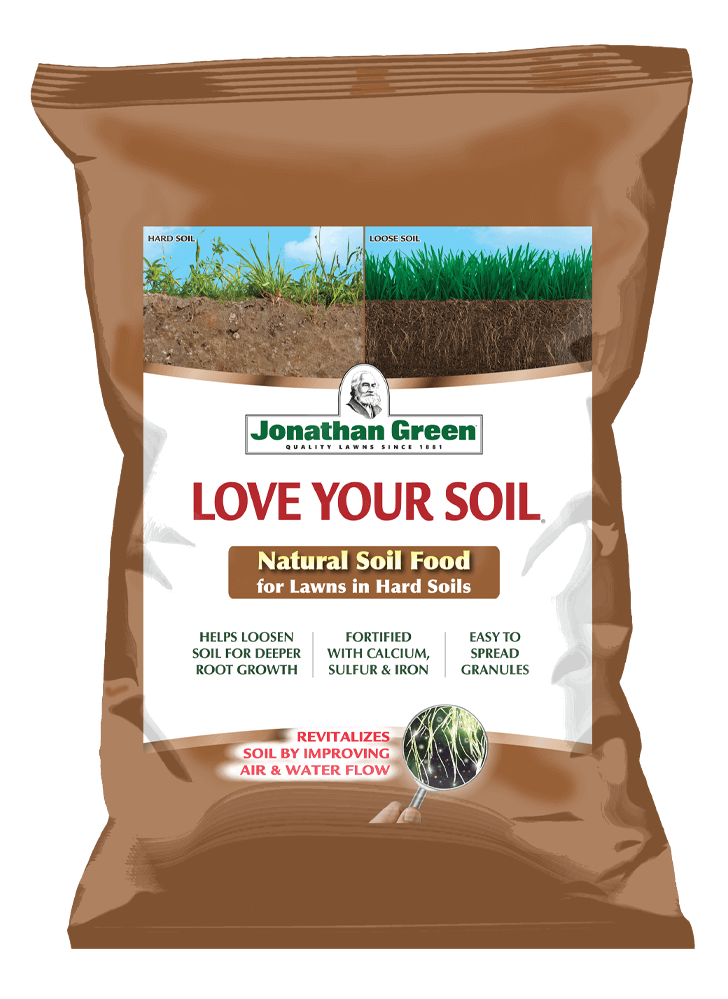Overseeding Grass
If your lawn looks like you’re raising crabgrass and weeds instead of grass, give it a fresh start by overseeding it with help from Jonathan Green.
The Jonathan Green name has represented high-quality grass seed, innovation, integrity, determination, and a commitment to excellence since 1881. Today, six generations later, we remain committed to producing superior lawn and garden products.
We supply grass seed, soil enhancers, fertilizer, and organic lawn and garden products to professional customers, such as sod growers and independent retailers, throughout the Northeast, Mid-Atlantic and Midwestern United States.
When to Overseed
Most overseeding is done in the spring when homeowners see the damage to their lawns at the end of a long winter. Consequently, they are motivated to improve the lawn, and most have great success when they use Black Beauty grass seed mixtures and follow the simple steps to successful overseeding.
Still, early fall is the very best time to overseed, when the air is cooling down, but the soil is still warm. Weed growth tapers off in the fall, so your new grass won’t have to compete for sunshine, water and nutrients. It will also have the benefit of two cool growing cycles before the heat of summer sets in.
Use the Best Grass Seed You Can Find
Used by leading sod growers across the country, Jonathan Green’s genetically superior Black Beauty® grass seed creates a lawn full of grass that:
- Is deep rooted (can grow roots up to 4 feet deep);
- Exhibits an invisible waxy coating (like the waxy skin on an apple) that wards off disease and locks in moisture;
- Has leaves that are dark green, lush, and uniform in texture;
- Grows well in both full sun as well as partial shade;
- Is endophyte-bred for natural insect resistance.
Overseeding Steps: Feed Your Lawn & Feed Your Soil
Step 1: Rake up dead grass and weeds and mow the lawn, cutting it about one notch lower than usual. This will enable sunlight to reach the soil surface. If you have bare spots, loosen them up with a rake or garden weasel to create good seed-to-soil contact and to keep the seeds from washing off of the soil surface in a big rainstorm.
Step 2: Correct soil problems (pH and/or compaction). Lawns grow best in a soil that is neutral to slightly acidic (between a 6.2 and a 7.0 reading), so it’s important to balance the pH before you reseed. The soil pH scale runs from 1 to 14, so 7 is neutral. An application of Jonathan Green’s MAG-I-CAL® Soil Food will help to raise the soil’s pH and, at the same time, help the new lawn grow thicker and healthier.
Love Your Soil® will loosen and aerate hard or compacted soil, feed the soil microbes, make the lawn soil more alive and porous, and enhance root development. MAG-I-CAL® and Love Your Soil® can be applied the same day as the grass seed.
Step 3: If you have a small lawn, you may be able to broadcast Jonathan Green Black Beauty® seed by hand. For larger lawns, a broadcast spreader is the best way to quickly cover a lot of ground and achieve uniform and even coverage. Make certain that the seed is slightly buried in the top soil.
Mentioned Products
Step 4: Water the lawn every day for a week or two, unless it rains. The goal is to keep the seed and top several inches of soil moist until the seeds germinate. Mow the new lawn when the grass plants are about three inches tall.
For more tips on the best grass and other products to use when overseeding your lawn, visit Jonathan Green online or locate your nearest retail store where you can get reliable lawn and garden advice.
